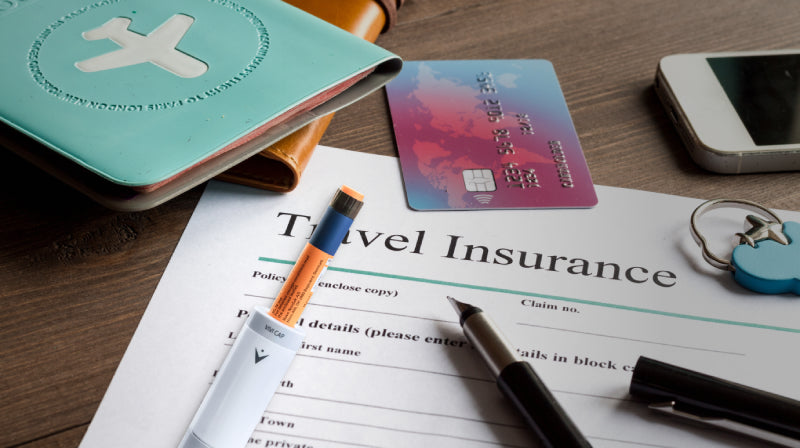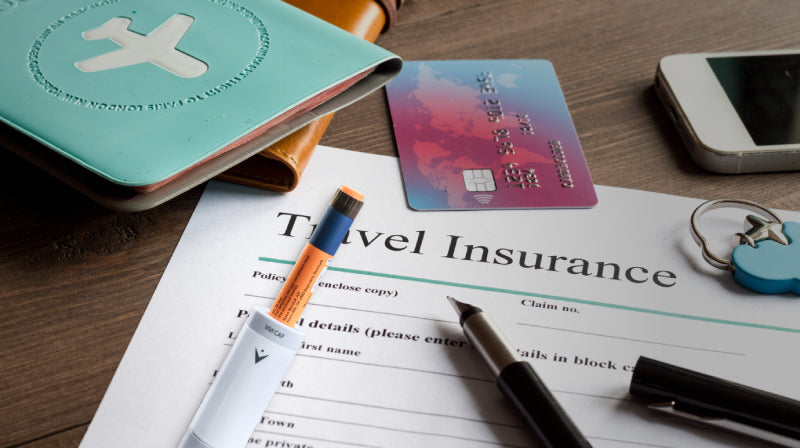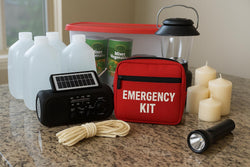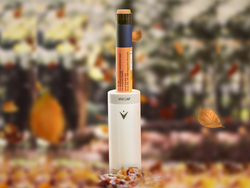Tempramed Blog
Purchasing Travel Insurance With Diabetes

With all the fluctuations and cancellations that can happen with travel these days, many people planning a trip choose to protect themselves with travel insurance. Travel insurance can protect a traveler against smaller inconveniences, such as lost or misplaced luggage, to bigger issues such as medical care when traveling. When a traveler has diabetes, however, travel insurance becomes more complicated. How can one purchase travel insurance with diabetes? Are there additional steps to take when planning for a vacation with diabetes? Let’s take a look.
Travel Insurance With Diabetes

Many traditional health insurance plans, including Medicare, provide little to no coverage when you are traveling abroad. Travel insurance can serve as vital protection, therefore, for travelers against potentially high medical costs if an incident occurs.
With diabetes, things can get more complicated. Diabetes is considered a pre-existing condition by an insurer issuing travel insurance. This includes all forms of diabetes, such as Type I diabetes, Type II diabetes, pre-diabetes, and diabetes associated with pregnancy.
As a pre-existing condition, unfortunately, diabetes may exclude a traveler from coverage. There are a few alternatives those with diabetes can consider, however.
Types of Travel Insurance for Those With Diabetes
Some policies may offer a pre-existing condition waiver. This means that you will be covered for many medical interventions, provided they are not related to your pre-existing condition. To qualify for a waiver, travelers typically must meet the following criteria:
- You must be medically fit to travel, and your pre-existing condition should be stable. In the context of diabetes, this means that you are able to regulate your blood levels efficiently with insulin.
- You must buy the travel insurance around the time you purchased your trip or made a deposit on a trip. This timeframe will vary from one policy to the next.
- The amount of coverage purchased must be equal to all pre-paid, non-refundable costs associated with your booking.
In lieu of a waiver, travelers can also consider a regular travel insurance policy and rely on what is known as a “look back.” In this scenario, if a medical incident occurs on a trip, the insurance company will “look back” at the previous 60 to 180 days (depending on terms) to establish whether or not an incident was caused by a pre-existing condition. If not, the insured receives coverage for that medical incident.
Travel Insurance With Type I Diabetes
Those scenarios come with some significant caveats, however, especially for those with Type I diabetes. Instead, travelers with diabetes can look into policies designed specifically for those with Type I diabetes or another type of diabetes. Diabetes travel insurance can come at a higher premium but will provide the necessary protection for someone with diabetes needs when traveling in a foreign country. These policies may not only cover medical incidents related to diabetes but also cover replacements for important medications and accessories, such as an insulin pen.
Air Travel With Diabetes


Air travel can be particularly difficult for those with diabetes. Preparing adequately for air travel when diabetic should involve purchasing travel insurance for diabetes, but also should include:
- Getting TSA notification card to expedite the security screening process at airports when carrying insulin and other medications
- Packing fast-acting carbohydrates in a carry-on, including juice (Note: Diabetics are exempt from the liquid limits for carry-ons.)
- Asking for a hand inspection of devices such as glucose monitors or insulin pumps to avoid x-ray damage
- Packing your own meal or pre-ordering an airline meal that aligns with your dietary needs.
It is also a good idea to wear a medical bracelet that indicates you have diabetes in case of a medical incident. Researching in advance where and how you can purchase insulin while traveling is also advisable. Keep in mind, too, that baggage held in an airplane can get quite cold; as such, it’s always advisable to pack your insulin products into a carry-on.
Insulin Life

It is also important to know the life span of insulin when traveling. The length of time that insulin lasts after you first use it or remove it from refrigeration can vary from one product to the next. With an insulin pen, the lifespan of a product can range from 10 days to 30+ days, depending on the manufacturer. Confirm the lifespan of your insulin product before you begin your travels, pack extra insulin, and make sure that you have secure and reliable methods for keeping your insulin at the right temperature no matter where your travels take you.
International Travel With Diabetes
When traveling internationally, travelers should be aware that insulin syringe sizes and types can vary from one country to the next. If you find yourself low on insulin and need to get more at a pharmacy in a foreign country, confirm that the syringe size or dosage is the same as you use back home.
Enjoying Your Travels as a Diabetic
There is no reason those with diabetes cannot enjoy extended trips, whether they are local or international. Getting the right insurance for your needs is an essential first step. A necessary additional precaution is ensuring that you have the right accessories on hand to keep your insulin working well as long as possible. Solutions such as TempraMed’s VIVI Cap insulin cooler case can provide temperature protection for your insulin as you travel, keeping it at an ideal temperature and stowing it easily into your carry-on. By attending to these key details, you can be safely on your way to an adventure, wherever your travels may take you!




